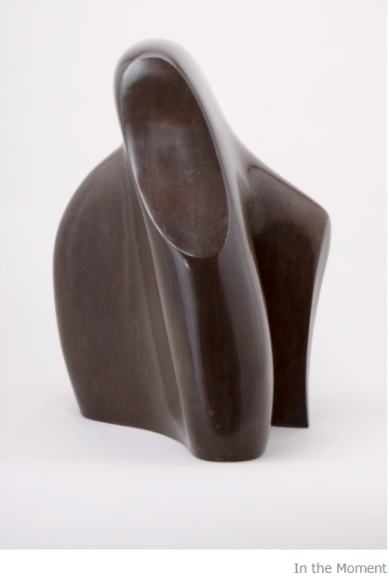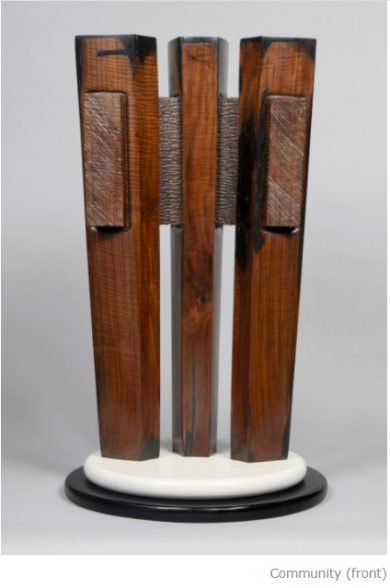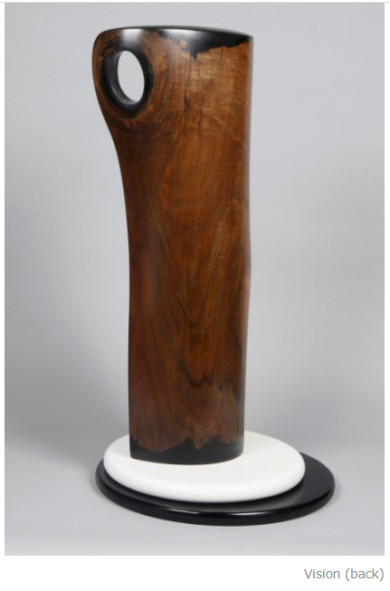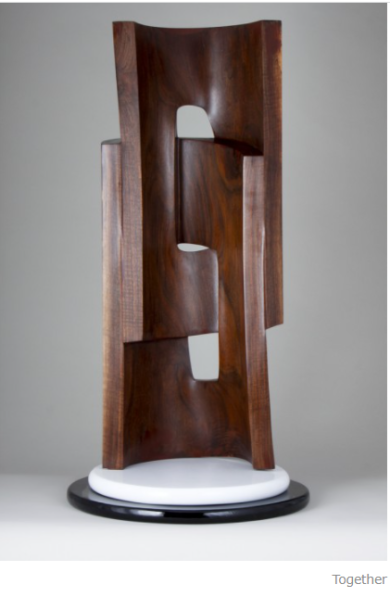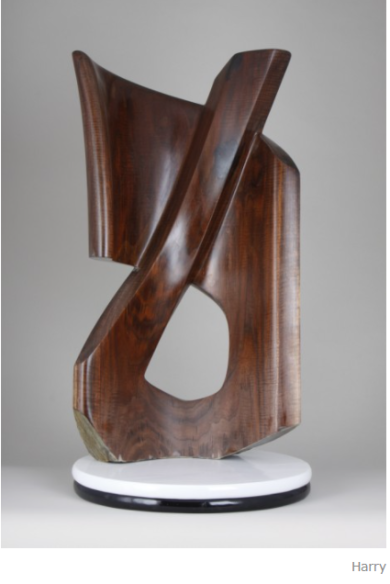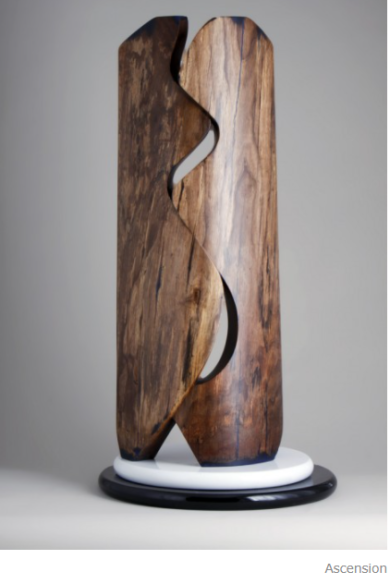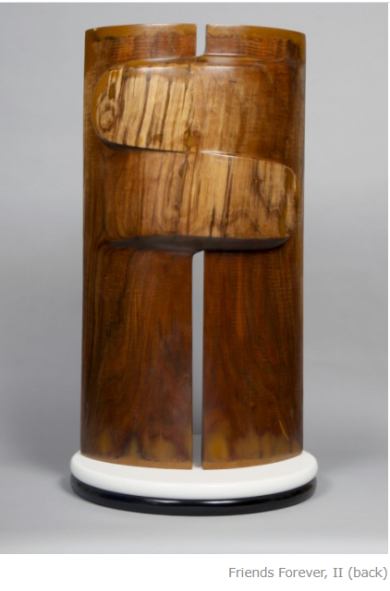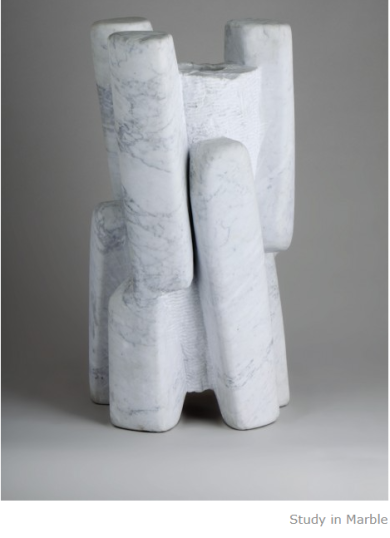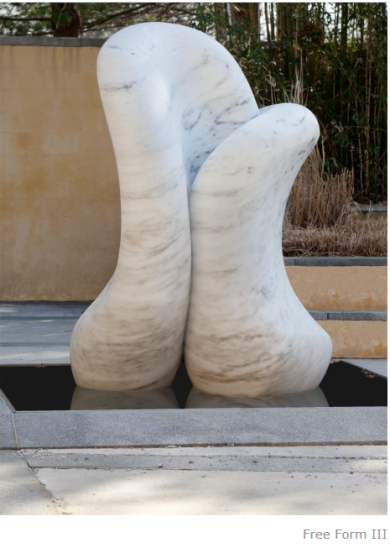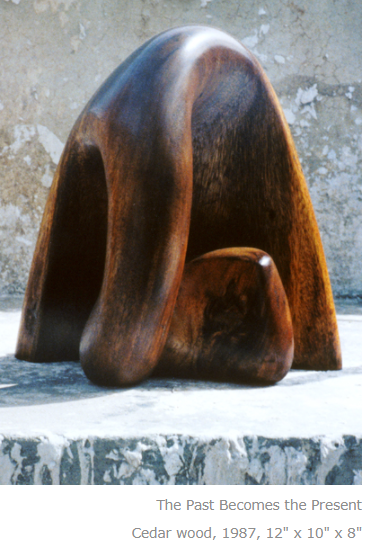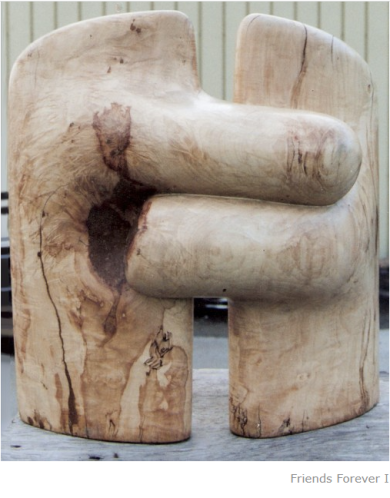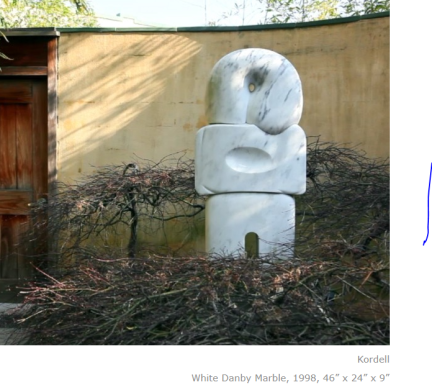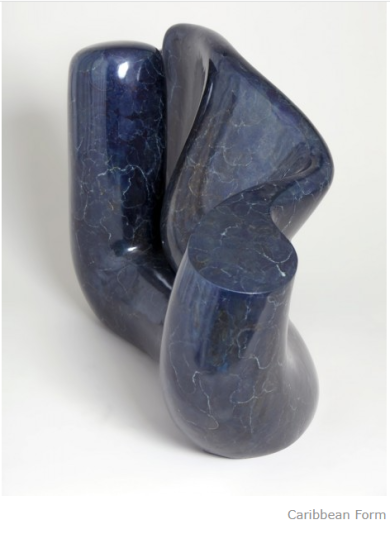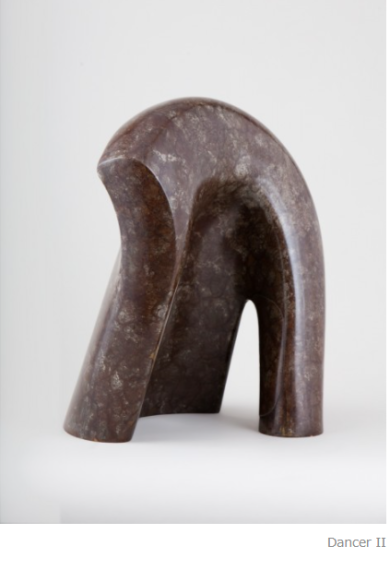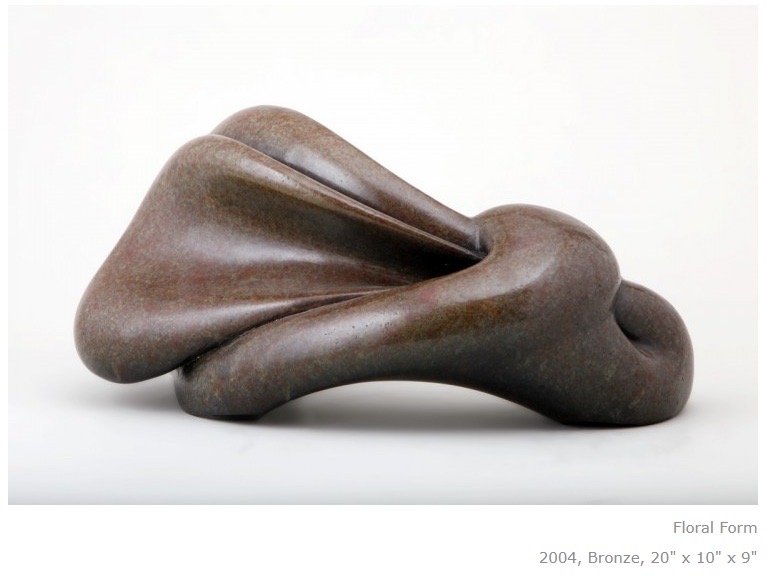
Sculpture and words of Autin Wright / Scultura e parole di Autin Wright
(translation into Italian at the bottom of the page)
Autin Dean Wright was born and raised on the Caribbean island of Jamaica. A graduate of the Edna Manley School of Visual Art in Kingston, he was honored with a Certificate of Merit as well as a gold, a silver, and two bronze medals at Jamaica’s Annual Festival of Fine Arts Exhibition. His work was included in the National Fine Arts Exhibition in Jamaica and he was the recipient of the Simon Bolivar Sculpture Competition Award hosted by the Venuzeula Embassy in Jamaica. Wright moved to the United States in 1987. After graduating from the Connecticut Institute of Art in Greenwich, he became the Technical Supervisor for Paint and Patina at the Johnson Atelier Institute of Sculpture in Mercerville, NJ. Autin has 6 sculptures installed at the Grounds For Sculpture in Hamilton, NJ and Camille is at Penn Medicine’s Princeton Health Care System in Plainsboro, NJ. Wright currently resides in Trenton, NJ.
An interview with Sculptor Autin Wright (by Pamela Goldman)
Pamela Goldman: «How do you know when there is ‘pure potentiality’ for art in a certain piece of material such as marble, wood, bronze etc… to become a work of art?».
Autin Wright: «First, I sit down and do hundreds and hundreds of drawings. It is fair to say that at this point, the image is being conceived inside of my mind. It’s similar to a ‘search’ for something that agrees with your creative sense of expression».
P.G.: «What is the feeling like when you have your desired outcome?».
A.W.: «The feeling is an awesome feeling. You experience it while working on the piece through. It’s completion and long after. Time stands still. The moment is eternal and infinite. You’ve made your way through until there is nothing left to take away, add or subtract. There is balance, movement and the love you put into it as a creator. I see it almost as though I have achieved a God-like quality because I have put something into being that wasn’t there before. A creator, who has brought down something from above, heaven or the infinite. A Christian metaphor is the act of ‘giving birth.’ There are pains in the development but the outcome is ‘you’re bringing something to life’».
P.G.: «When did you begin to see creation in this way?»
A.W.: «I discovered this on my own. Nobody taught me the rewards of creation… I discovered it after I completed my first work. The ‘high’ I got was breathtaking and lasts forever when I create. When I am so called ‘pregnant’ with an idea or working on a piece, I sleep it, eat it and dream it. I can even envision the 3-dimensional piece and turn it around in my mind. So although it may have been conceived in the studio, it still has a life inside of me which I take wherever I go. In the meantime, I listen to the silent whispers of the piece which talk to me and will tell me when it is done».
P.G.: «What is the greatest benefit of your artistic practice?»
A.W.: «When you create, it takes your thought away. You lose your ego and the solitude washes over your being. Space frees up and your instincts are activated. It is a sort of a series of long meditations. You are fully in the moment. This practice benefits my life across the board. It cultivates emotional and intellectual health, while physically, working with my hands, keeps me grounded, consistent and focused with clarity. There is a euphoria that sets in while transmitting love to the material and its response of beauty as a result of my engaging with it. A paradise manifesting itself into being and I am birthing it along».
P.G.: «When and how did you have that moment or discovery that sculpting would be your life’s work?»
A.W.: «I always drew and painted. When I went to art school, I was introduced to 3D expression. It was exciting for me to deal with mass, break up space and so forth. I think it’s my personality type to gravitate towards organic forms. In Jamaica, we believe that everyone has a ‘Motherly instinct’. We gravitate towards anything circular, or organic because it represents mother-earth… as humans, this is our natural inclination».
P.G.: «Do you sculpt in silence?».
A.W.: «Yes, I prefer silence because my mind is occupied by the form. Hearing the chisel, mallet, sanding and filing is a sort of heaven to me. It is the pure sound of creation. Also with the silence, I can dialogue with the piece and ‘hear’ what needs to be done for balance, movement and proportion. The piece also tells me when it is finished».
P.G.: «What is your philosophy of life and creation at this point in time?»
A.W.: «My work comes first and my understanding of it comes second. With each piece I create, there is an opportunity to know myself on deeper and deeper levels. As human beings, some of our DNA is unique to the individual yet, there is a mass of DNA that is common to all. I try to reach people through this universal realm which is in everyone».
P.G.: «Finally, what do you want the viewers to understand as they look at your pieces?».
A.W.: «I want them to develop their own personal dialogue with the piece. Just like I communicated with the piece as I brought it into being, I have a unique relationship with it. So most of all, ‘build your own relationship to the piece, communicate with it… many answers will come from that relationship’».
To send a message to the artist or the administration click the link: www.museummilecontemporary.org
Traduzione in italiano
di Simona Maria Frigerio
Autin Dean Wright è nato e cresciuto in Giamaica. Laureato presso la Edna Manley School of Visual Art di Kingston, ha ricevuto un Certificato di Merito così come una medaglia d’oro, una d’argento e due di bronzo al Festival annuale giamaicano di Belle Arti. È stato altresì esposto presso la National Fine Arts Exhibition e ha ricevuto il Premio Simón Bolívar per la Scultura – ospitato dall’Ambasciata del Venezuela in Giamaica. Wright si è trasferito negli Stati Uniti nel 1987. Dopo la laurea al Connecticut Institute of Art di Greenwich, è diventato il responsabile tecnico per la pittura e la patinatura al Johnson Atelier Institute of Sculpture a Mercerville (in New Jersey). Sei tra le sue sculture sono installate presso i Grounds for Sculpture a Hamilton; mentre Camille è ospitata al Penn Medicine’s Princeton Health Care System di Plainsboro (sempre in N.J.). Wright risiede a Trenton.
Un’intervista allo scultore Autin Wright (di Pamela Goldman)
Pamela Goldman: «Come capisce se c’è la ‘potenzialità pura’ in un materiale, sia esso un blocco di marmo, legno, bronzo, eccetera, per trasformarsi in un’opera d’arte?».
Autin Wright: «Primo, mi siedo e faccio centinaia di disegni. È corretto dire che, a questo punto, l’immagine è concepita nella mia mente. È simile alla ‘ricerca’ di un qualcosa che si accorda al proprio senso di espressione creativa».
P.G.: «Cosa prova quando l’oggetto del desiderio si trasforma in realtà?».
A.W.: «Incredulità e meraviglia. Un’emozione che si sperimenta anche durante il lavoro. Un senso di realizzazione che dura a lungo. Il tempo pare fermarsi. Il momento diventa eterno e infinito. Prosegui per la tua strada finché non rimane nulla da togliere, aggiungere o sottrarre. Vi è equilibrio, movimento e l’amore che vi infondo come creatore. Vedo l’opera come se avessi conquistato la qualità di un semi-dio, in quanto ho creato qualcosa che prima non esisteva. Un creatore, che ha portato in questo mondo un quid da lassù – paradiso o infinito. Una metafora cristiana sarebbe l’atto di ‘dare la vita’. Si soffre durante ma il risultato è: ‘stai portando qualcosa in vita’».
P.G.: «Quando ha iniziato a intendere l’atto creativo in questo modo?»
A.W.: «L’ho compreso da me: nessuno mi ha insegnato quale sarebbe stata la ricompensa della creazione… L’ho scoperta dopo aver completato la mia prima opera. Il ‘picco’ emotivo che raggiungo toglie il fiato e dura per tutto il tempo in cui creo. Quando sono per così dire ‘gravido’ di un’idea o sto lavorando a un pezzo, ci dormo insieme, la mangio o la sogno. Posso visualizzarla in 3D e rigirarla nella mia mente. Anche se può essere stata concepita in studio, è come se mettesse radici in me e me la porto in giro ovunque vada. Nel frattempo, ascolto i sussurri silenziosi del pezzo, che mi parla e mi dice quando è finito».
P.G.: «Qual è il maggior profitto della pratica artistica?»
A.W.: «Quando si crea, si smette di pensare. Scompare l’ego e la solitudine dilava l’anima. Lo spazio si libera e si attivano i nostri istinti. Una sorta di lunghe meditazioni. Ci si sente completi in un preciso momento. Una pratica di cui beneficia la mia intera esistenza. Aiuta a coltivare la salute emotiva e intellettuale; mentre, a livello fisico, il lavorare con le mie mani mi mantiene coi piedi per terra, coerente e focalizzato su un obiettivo con chiarezza. Ci si trova immersi in uno stato euforico mentre si trasmette il proprio amore al materiale e si avverte la bellezza della sua risposta quale risultato dell’impegno profuso. Un paradiso che si manifesta nel venire al mondo e sono io che lo faccio nascere».
P.G.: «Quando e come ha compreso che la scultura sarebbe stata il suo lavoro per la vita?»
A.W.: «Ho sempre disegnato e dipinto. Quando frequentavo la scuola d’arte, sono stato introdotto alle tecniche in 3D. È stato eccitante avere a che fare con la massa, distruggere lo spazio e così via. Penso c’entri con la mia personalità gravitare intorno a forme organiche. In Giamaica, crediamo che ognuno di noi abbia un ‘istinto materno’. Siamo attratti dalla circolarità, o dall’organico, perché rappresenta la Madre Terra… Come esseri umani, è un’inclinazione naturale».
P.G.: «Scolpisce in silenzio?».
A.W.: «Sì, preferisco perché la mia mente è occupata dalla forma. Sentire lo scalpello, la mazza, carteggiare e levigare è una sorte di paradiso per me: il suono della creazione pura. Inoltre, grazie al silenzio, posso dialogare col pezzo e ‘sentire’ cosa occorre fare a livello di equilibri, movimento e proporzioni. Il pezzo mi comunica altresì quando è pronto».
P.G.: «Qual è la sua filosofia di vita e creativa a questo punto?»
A.W.: «Il mio lavoro viene prima di tutto e la mia comprensione dello stesso arriva dopo. Ciascuna opera è un’opportunità per conoscermi a livello sempre più profondo. Come esseri umani, parte del nostro DNA è unico in quando individui ma un’altra parte è in comune con gli altri esseri umani. Cerco di raggiungere le persone attraverso questo legame universale che è in tutti noi».
P.G.: «Cosa vorrebbe che gli spettatori comprendessero guardando le sue opere?».
A.W.: «Vorrei sviluppassero il proprio dialogo personale con il pezzo. Come ho fatto io mentre lo portavo in vita: ho con esso una relazione a suo modo unica. Più di tutto, occorre ‘costruire una propria relazione con l’opera, comunicando con essa… molte risposte si genereranno attraverso questo genere di relazione’».
Per inviare un messaggio all’artista o all’amministratore del sito, cliccare: www.museummilecontemporary.org
Friday, January 14, 2022 / Venerdì, 14 gennaio 2022
On the cover and in the article: all images courtesy by the artist ©Autin Wright (all rights reserved. Reproduction prohibited). / In copertina e nell’articolo: tutte le immagini courtesy l’artista, ©Autin Wright (tutti i diritti riservati. Vietata la riproduzione).


